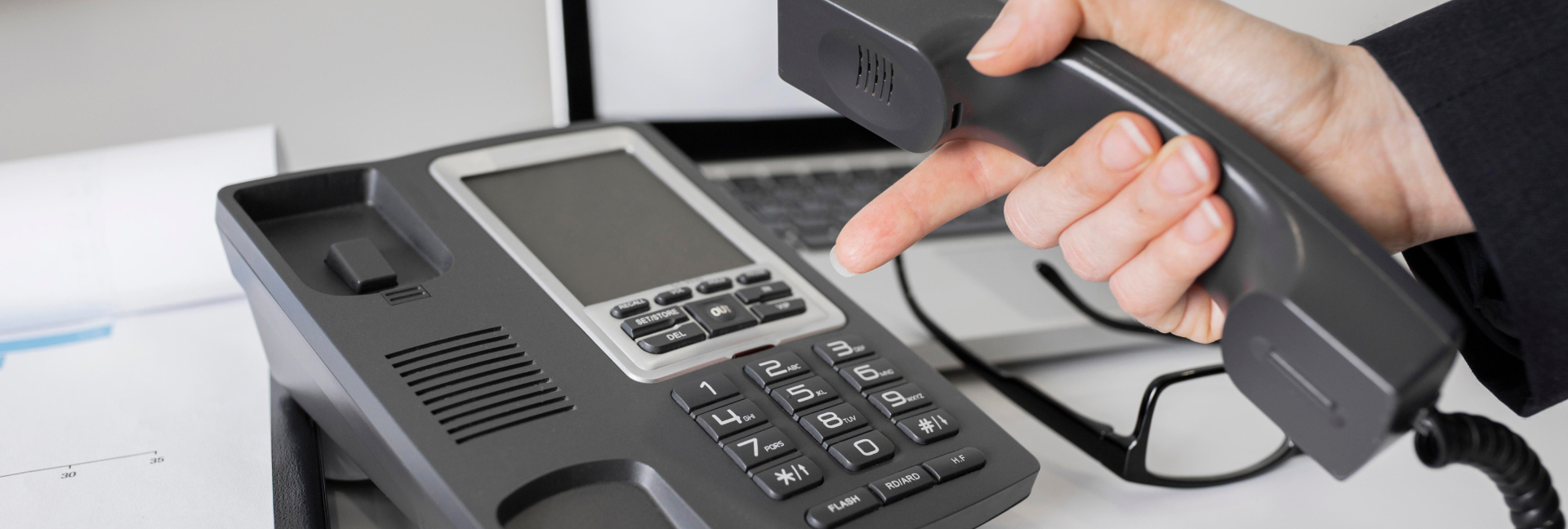
 Aug 5 2022
Aug 5 2022
It’s no secret that more and more people are cutting the cord. The home phone as it was once known is now largely gone, replaced with mobile technologies. But that was before, with a landline. Many people are beginning to see the benefit of a home phone, but with a stellar capabilities upgrade.
Voice Over Internet Protocol (VoIP) phones have been steadily replacing the traditional landline. VoIP allows you to enjoy the same widely known benefits of having a home phone, whether to make sure that you can always be reached or in case of emergencies. The difference is, the new VoIP home phone allows you to do so much more with every call, including enhanced 911 calling and call forwarding.
Rather than utilizing a copper-based landline connection, VoIP utilizes the internet connection at your home. This allows you to make calls on both regular phones and mobile devices. The call is converted to data packets that are sent over the internet.
Are you considering getting a Comwave home phone? If you’re curious about VoIP home phones and have questions, you’ve come to the right place. Get the answers to all your questions about Comwave VoIP home phones below.
Want to know how VoIP home phones work and what the call quality is like? Find out the answers to the most commonly asked questions about VoIP—the technology behind all-new Comwave home phones:
1. How can I call using VoIP?
Making a VoIP call isn’t any different than a landline. You dial a number or pick up the phone to answer. If you’re using a mobile device, all you need is a free VoIP-enabled app. The only difference is the connection that enables the call. Rather than rely on copper wires that were built decades ago, as is the case with landlines, VoIP uses your home internet connection instead to transmit data more quickly and reliably.
2. Can I call any phone or just VoIP home phones?
You can call any number with a VoIP home phone! VoIP doesn’t distinguish between calls to landline and mobile. However, keep in mind that your carrier may place certain restrictions or charge differently depending on the type of call that you are making.
3. What can a Comwave VoIP home phone do that a landline cannot?
Your Comwave home phone has numerous advantages over the traditional landline. VoIP is a major upgrade, with features such as:
4. What do I need to start using VoIP?
A lot of people wonder if they need a computer to make VoIP calls, since it runs on high-speed internet. The answer is no. What you need is an IP phone or an ATA to connect your existing home phone to the internet. And most importantly, you need reliable, high-speed internet from providers like Comwave to enable VoIP calling.
5. Can I keep my existing phone number?
Most VoIP phone providers support portability and allow you to keep your existing phone number, including Comwave. If you already have an existing home phone number, you can easily port it to your VoIP connection. Check your Comwave home phone plan for details about porting an existing number, and how long it will take.
6. Can I use my VoIP phone when I’m not home or travelling?
Yes. Unlike landline phones known for their lack of portability, you can use your Comwave home phone while travelling. Make sure that you are connected to the internet and have a VoIP phone adapter or a mobile app to make and receive calls smoothly.
7. Are VoIP calls clear?
VoIP phone calls are generally good quality, with clear audio. Call quality has improved significantly over the past few years, putting them at par or more often even better than landline.
If you are hearing static or an echo during a call, it’s worth figuring out what’s affecting the call quality. This could be caused by the hardware or your internet connection. But, there are steps that you can take to troubleshoot the connection, including:
If it’s not a hardware problem, you may need to check your internet connection. You need reliable, fast internet speeds to make and receive calls with your VoIP home phone. Make sure your connection is compatible with VoIP, and do an internet speed test.
If the problem persists, call the Comwave Technical Support Team for further troubleshooting.
8. Are VoIP calls secure?
You don’t want another party listening in on your calls. It doesn’t matter if it’s personal or for business—calls should always be secure. However, since VoIP calls run on the internet, it’s understandable to be worried about security breaches.
The good news is, there are only a handful of documented cases of VoIP security breaches. Plus, VoIP calls made on your Comwave home phone are completely encrypted, giving you the utmost peace of mind.
9. My Comwave home phone doesn’t have a dial tone. What should I do?
If you’re not getting a dial tone, you can try these steps to restore your connection:
If you’ve tried all of these tips but you still don’t have a dial tone, call Comwave Technical Support. The team will be happy to assist you and get your Comwave home phone working again.
10. I can’t receive and make calls. What should I do?
Typically, there are two scenarios that occur: you can receive calls but not make them, or the opposite—you can make outgoing calls but not receive them. Here’s how you can fix these issues.
And remember, if the problem persists, contact Comwave Technical Support for quick and friendly support, so you can go back to making and receiving calls as soon as possible.
Now that you know everything you need to know about VoIP, it’s time to get your own VoIP home phone with Comwave. The Comwave team can help you find the right calling plan for your needs, so you can always be reached at home at the best value for your budget. We’ll help you through the entire process, from learning about VoIP home phone features to making sure your Comwave internet is fast enough, so you never miss a call.

Comwave is Canada’s largest independent communications company, offering home internet, TV and phone services at some of the best prices in Canada.
1-866-542-6694© 2022 Comwave Networks Inc. All rights reserved.
911 has certain limitations versus traditional E-911. Details at www.comwave.net/legal



First, let us know where you live so we can make sure that we can provide service in your area.